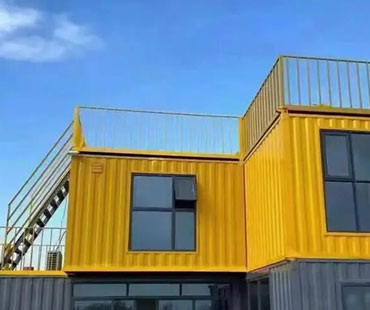The global trade landscape has undergone significant transformation over the past few decades, primarily driven by advancements in container handling technology. As the backbone of international shipping and logistics, the efficiency and safety of container handling processes are critical to maintaining the flow of goods across the globe.
Containerization revolutionized shipping in the late 1950s, introducing standardized containers that could be easily transferred between ships, trucks, and trains. The introduction of the first container ship, the Ideal X, marked the beginning of a new era in maritime logistics. However, the handling of these containers posed numerous challenges, including the need for cranes and equipment capable of lifting heavy loads efficiently while ensuring the safety of workers and cargo.
Key Innovations in Container Handling Technology
1.Straddle Carriers and Reach Stackers
The development of straddle carriers and reach stackers in the 1970s provided a significant improvement in container handling capabilities. Straddle carriers can lift containers from the ground and position them accurately in storage yards, while reach stackers offer the flexibility to stack containers vertically, maximizing space utilization. These machines have become essential in container terminals, allowing for faster loading and unloading operations.
2.Automated Guided Vehicles (AGVs)
The introduction of AGVs in the late 20th century marked a pivotal moment in container handling technology. These unmanned vehicles can transport containers within terminals without human intervention, significantly reducing the potential for accidents and injuries. AGVs are programmed to navigate complex terminal layouts, enhancing the speed and efficiency of container movement while minimizing operational costs.
3.Crane Automation and Smart Technology
Modern container cranes have evolved to incorporate advanced automation and smart technology. Automated gantry cranes can operate with minimal human oversight, utilizing sensors and artificial intelligence to optimize lifting operations. These cranes can adjust their movements in real-time based on environmental conditions and container weight, improving safety and efficiency. Moreover, data analytics allows terminal operators to predict container flow patterns, further enhancing operational planning.
4.Blockchain and IoT Integration
The integration of blockchain technology and the Internet of Things (IoT) is revolutionizing container tracking and management. IoT devices embedded in containers provide real-time data on location, temperature, and humidity, allowing for better monitoring of cargo conditions throughout the shipping process. Blockchain enhances transparency and security in transactions, reducing the risk of fraud and improving trust among stakeholders in the supply chain. Together, these technologies streamline operations and enhance safety by providing accurate information at every stage of the shipping process.

Enhancing Efficiency
The evolution of container handling technology has led to significant gains in operational efficiency. Automated systems reduce the time required for loading and unloading, allowing ports to handle larger volumes of cargo with fewer resources. This increased throughput is critical as global trade continues to grow, with container traffic expected to double in the coming decades.
Furthermore, optimizing container handling processes through advanced technology reduces turnaround times for ships in port. Faster loading and unloading enable vessels to spend less time at dock, increasing overall fleet efficiency and reducing shipping costs. These efficiencies contribute to a more agile supply chain, allowing businesses to respond more effectively to market demands.
Ensuring Safety
Safety is paramount in the shipping industry, and advancements in container handling technology have significantly mitigated risks associated with cargo handling. Automated systems reduce the reliance on human labor, lowering the likelihood of accidents and injuries. Additionally, smart technology enhances safety by providing real-time monitoring of equipment and operational conditions, allowing for quick responses to potential hazards.
Training programs for operators are also evolving to incorporate new technologies, ensuring that personnel are equipped with the skills necessary to operate advanced machinery safely. The combination of technology and training fosters a culture of safety within the industry, prioritizing the well-being of workers and the integrity of the cargo.
The evolution of container handling technology has been instrumental in enhancing the efficiency and safety of the shipping industry. From the introduction of straddle carriers to the integration of automation and smart technologies, each advancement has contributed to a more streamlined and secure logistics process. As global trade continues to expand, ongoing innovation in container handling technology will be crucial to meeting the demands of the future, ensuring that the industry remains resilient, efficient, and safe for all stakeholders involved. Embracing these technological advancements will pave the way for a more sustainable and prosperous shipping environment in the years to come.


